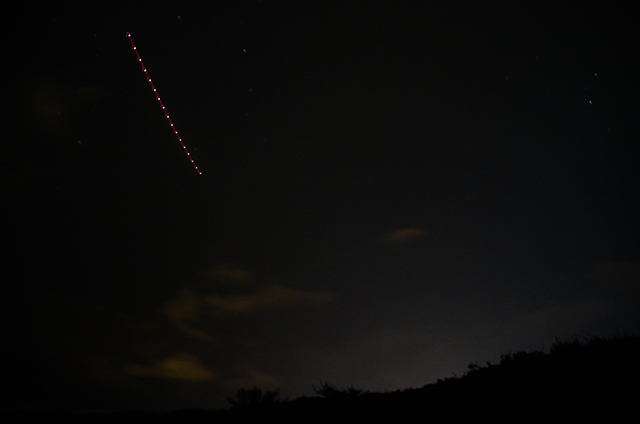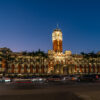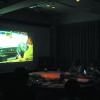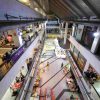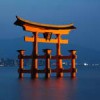2023.01.20-01.22 Yuichi Anzai+ Chuanyi Liu
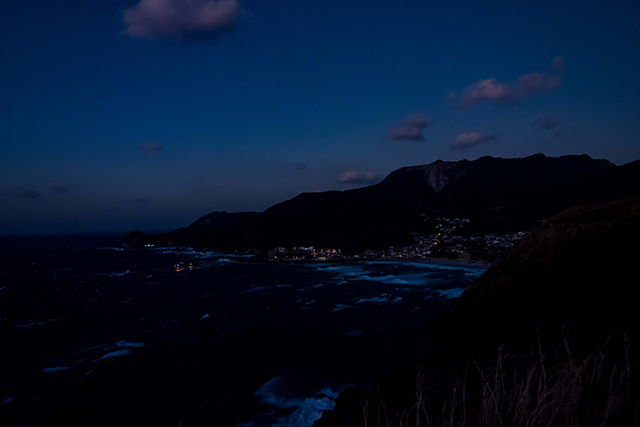
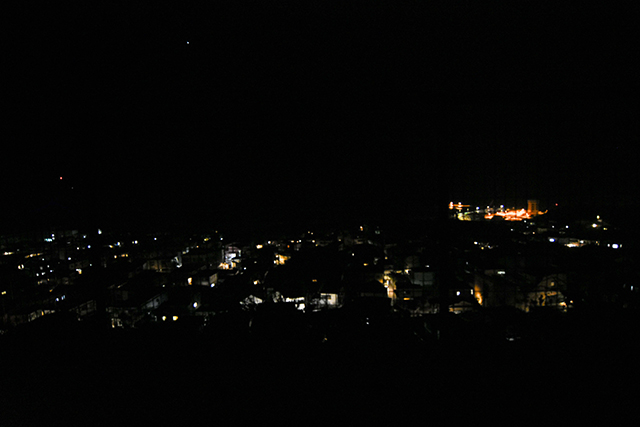
■Kozushima Village
Kozushima is located about 180 kilometers south of central Tokyo with a population of about 1,800. The terrain is complex, with almost no flat land. The village is located in the center of the island at the foot of Mt. Tenjo. The impetus for the starry sky protection activities on Kozushima came from a comment made during a student internship program by the Tourism Foundation in 2016, that the night sky was as beautiful as a planetarium. The starry sky, a common sight on the island, has become a tourism resource. An island-wide effort to protect the sky began. Specific efforts include replacing streetlights and security lights with fixtures with 0% upward luminous flux and 2,700K color temperature, holding explanatory meetings for residents and regular workshops with experts to gain their understanding and cooperation in light pollution and starry sky protection activities, training islanders as guides, and holding star gazing events to protect the night sky from light pollution and communicate the appeal of the starry sky both on and off the island. The island is also working to protect the night sky from light pollution and convey the charm of the starry sky to the public.
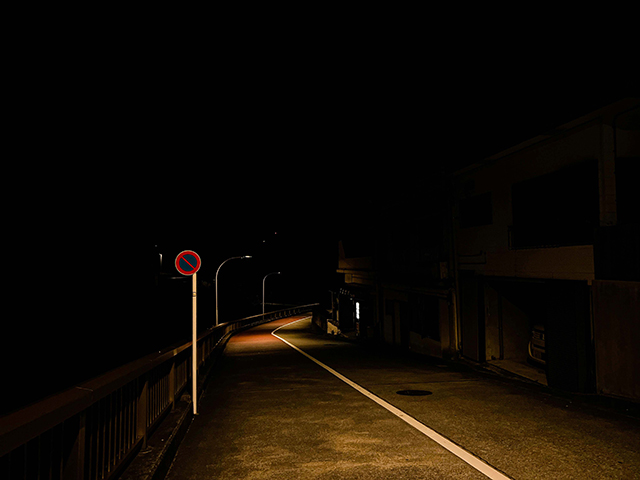
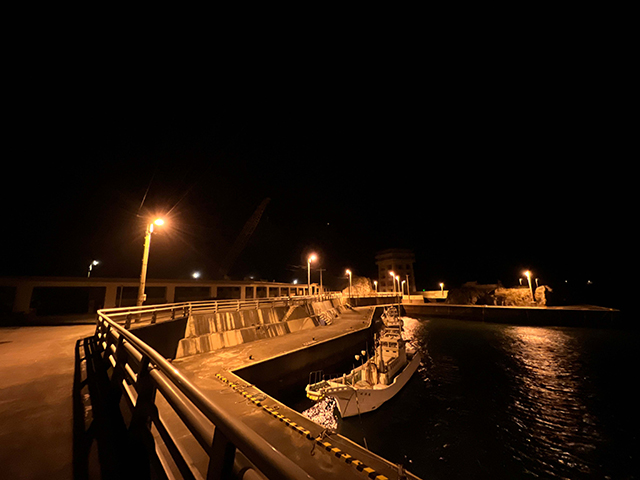
The “Light Pollution Prevention Ordinance to Protect the Beautiful Starry Sky of Kozushima Village,” which specifies the responsibilities of residents and businesses to prevent light pollution, will be enacted in 2019, and rules are being developed to limit the lighting equipment that can be used, lighting methods, and the time of use. The survey began on the main Kozu road, a trunk road. Pole lamps about 8 m high illuminate the road at 25 m intervals. The floor directly under the lamps is well illuminated at about 100 lx. The glare of the light source the one can feel is subtle, but the brightness of the road surface and the dark surroundings give the impression of being under a spotlight on the stage when you are under the pole lamps. This was the first time for me to see a road where all the lights were 2700K. It was unfortunate that the whiteness plus luminosity of the vending machines stood out in that light environment. The narrow
streets in the village are equipped with security lights at a height of 3 meters. The luminaire has a luminous flux of about 20 lx on the floor directly below it. There is no upward luminous flux, and the light illuminates the confluence of roads, corners, and other places where it is necessary for safety. Even under the light pollution control lighting, I did not feel any negative darkness, such as danger or fear. What surprised me was that my eyes began to catch the light of the stars just a short distance away from
the road lighting. The number of stars is completely different from the sky in the city center. It is a common sight for the locals, I was told.
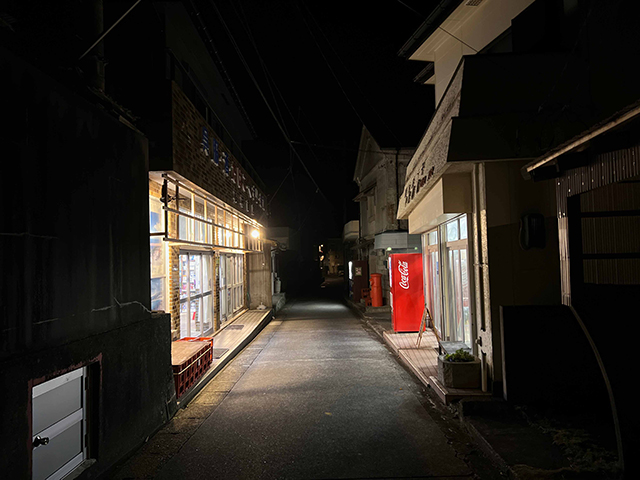
While walking along the street in a calm light environment of 2700K overall, I suddenly encountered a scene where light leaking from a store enveloped the street. 4200K, about 50 lx in front of the store. It is a leakage light of general fluorescent lamps, but I
feel it is quite bright. This may be because the brightness of the island as a whole is suppressed and the light emitted from the standing surfaces is low. When we asked a member of the tourist association, he said that while they seek to understand light pollution, their priority is the livelihood and safety of the residents. The village streets stand out in an environment where multiple lights do not clutter the streets, and each light stands out. It was an interesting discovery that the impression of the casual light of daily life, such as light leaking from houses, was different from big cities.
■Stargazing
During the Kozushima survey, we also participated in a stargazing party guided by a local guide. The event was held at “Yotane Plaza” on high ground on the east side of the village. It is located right next to a residential area, just a few meters above sea level, but the plaza is pitch-dark. No light from streetlights or stores could reach the square. The sky quality meter, which measures the darkness of the sky, reads about 21 (mag/ arcsec²). It is possible to recognize light up to 6th magnitude stars, and in summer the
Milky Way seems to be beautiful. Unfortunately, the sky was cloudy and there was a strong wind, but a star-filled sky occasionally peeked out from between the clouds, and the guide explained the stars and constellations in the limited visibility. The light that had traveled from the stars tens of thousands of years ago and now finally arrived on earth was shining down on us. I was deeply moved. What struck me about the guide’s words was that all starlight is inherently different and colorful. In dark places, the human eye’s rod cells become active, causing objects to appear black and white. If we could see the true light of the stars with the naked eye, we would be able to see a night sky as colorful as that of a busy city center.
The sky directly above the island is dark, but the ridges of the mountains on the Izu Peninsula side are dimly lit. It is said that light from the city center illuminates the night sky. Also conspicuous in the dark sky were the lights of airplanes heading for Haneda and Narita airports. The planes frequently blocked the light of the stars as they entered landing gear and lowered their altitude. It was unfortunate to be brought back to reality while interacting with the stars, but I think it is amazing to be able to enjoy such a starry sky so close to the city center.
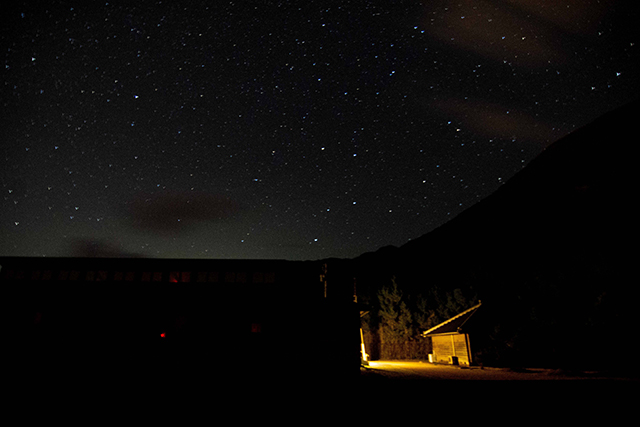
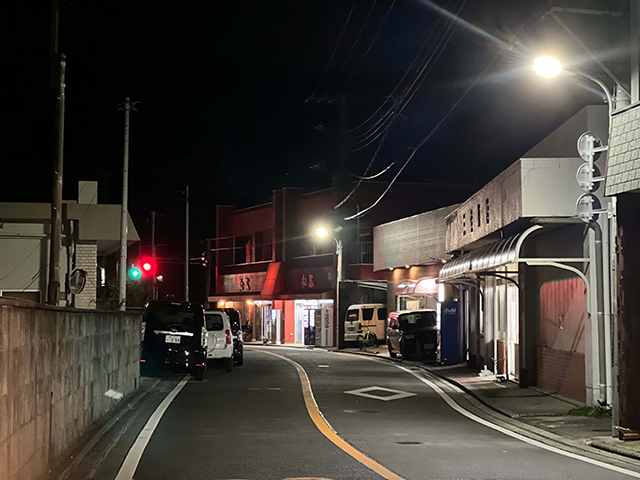
■Niijima Honcho-Town
Niijima-Island is about 160 km south of central Tokyo with a population of about 2,500. The island is larger than Kozushima in both area and population. Although the land is flatter than on Kozushima, Miyazuka Mountain, which borders the main village, is very impressive. The main road in the village is the Niijima main road, which crosses the center of the village from east to west. Restaurants are relatively clustered along this road. From there, stretching eastward, one can connect to Metropolitan Route 221, which leads to Niijima Airport and Habushiura Beach, famous for surfing. Traditional Japanese hotels and stores are scattered throughout the village in residential areas. Perhaps because the survey was conducted during the off-season for tourism, the Niijima-Island main road was almost empty during the daytime, but at night it became a lively scene as the lights of restaurants and stores began to shine and cars lined the road. When we asked the innkeepers, they told us that it was just time for the New Year’s party. From each restaurant, we could hear the lively voices of both locals and those posted from outside the island.
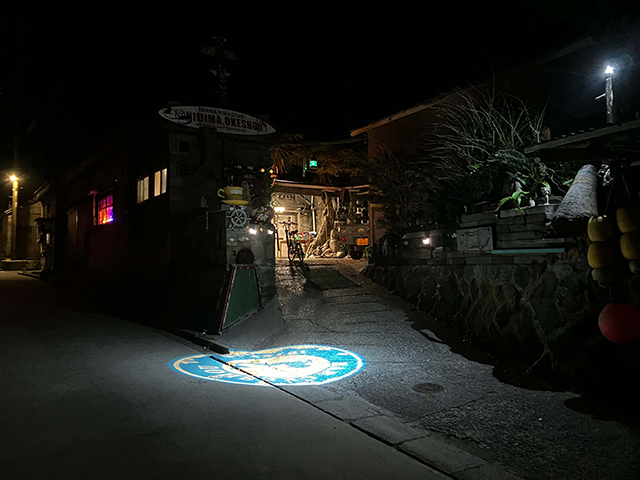
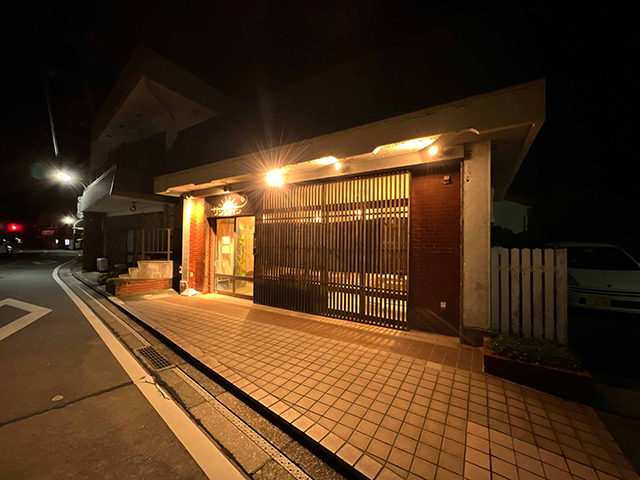
The lighting in front of the store is diverse, including spotlights, bare bulb type lighting, floodlights, and a projector with the store logo. Color temperatures ranged from 2700K to 5000K. However, the stores are scattered along the main street, and the scene was not noisy with a lot of lights. In fact, each store was worth a stroll with its own unique light at a distance from the others. The street lights are 5000K LEDs, illuminating the floor at about 40 lx at a height of 5 m. The light is strong both upward and horizontally. The lights emit strong light upward and horizontally, giving a dazzling impression compared to Kozushima-Island. The glare of the light source makes the surrounding environment seem darker in comparison. When you turn off the main road to a side street, you will enter a residential area, where the security lights are mainly used. I was surprised to find that the atmosphere of the nearby island was completely changed by the street lights.
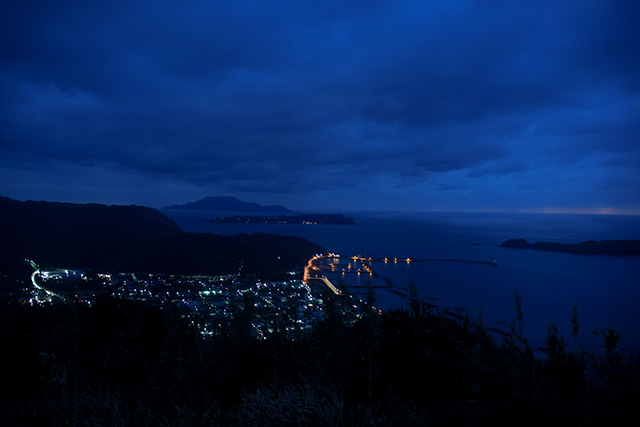

■Koga Stone Architecture + Moyai Statue
Niijima-Island is one of only two places in the world where biotite rhyolite (koga stone) is quarried. Koga stone has been used as a building material on Niijima because it is porous, lightweight, fire-resistant, heat-insulating, acid-resistant, sound-dampening, moisture- and vibration-resistant, and easy to process. At first glance, it looks like concrete, but up close, the glassy texture is beautiful and shiny. Walking around the village, one can see many walls and buildings made of koga stone, but unfortunately, newer buildings seem to be replacing koga stone with more common building materials. Many of the existing buildings are now empty and no lights are shining. Not long ago, until the Showa period (1926-1989), there were streets only on Niijima-Island.
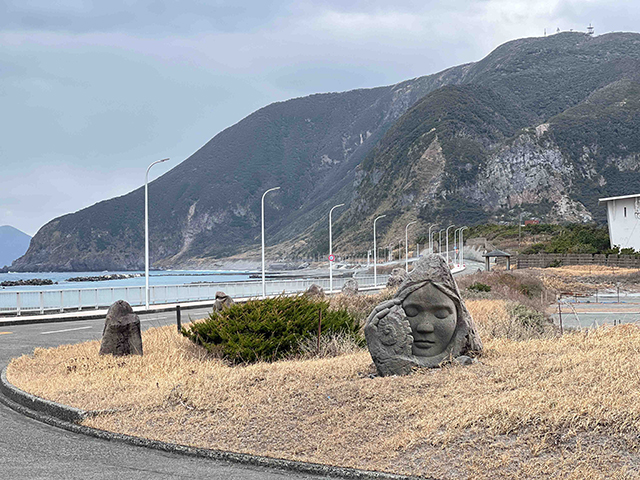
One of the most familiar works made from Koga stone for people living in the Tokyo metropolitan area is likely the Moyai Statue in Shibuya. It is said that the origin of the statue dates back to the 1960s, when island villagers carved a figure of an exiled person they admired out of Koga stone. In the 1970s, hands-on Moyai statue carving tours began to be held, attracting many tourists to the island. Thanks to that, there are now over 100 unique Moyai statues scattered around the island.
The highest concentration of these statues can be found along the road by Maehama Beach, where they welcome visitors arriving by ferry. At night, the area transforms into a distinctive landscape: 8-meter-high sodium and LED streetlights are placed roughly every 25 meters, softly illuminating the road and the statues with a gentle glow. It’s a uniquely atmospheric scene.
Since this landscape is unique to the island, it’s tempting to imagine each statue being lit carefully and individually. The deeply carved faces create powerful shadows that are striking even with subtle lighting. Ideally, I’d love to bring different types of lighting equipment and experiment with how each statue can be lit.
The Moyai statues are scattered across the island, and some rare ones are difficult to find. While I couldn’t find any statues that are actively lit up in my research, it’s still possible to enjoy their varied expressions at night as they subtly interact with the ambient light around them.
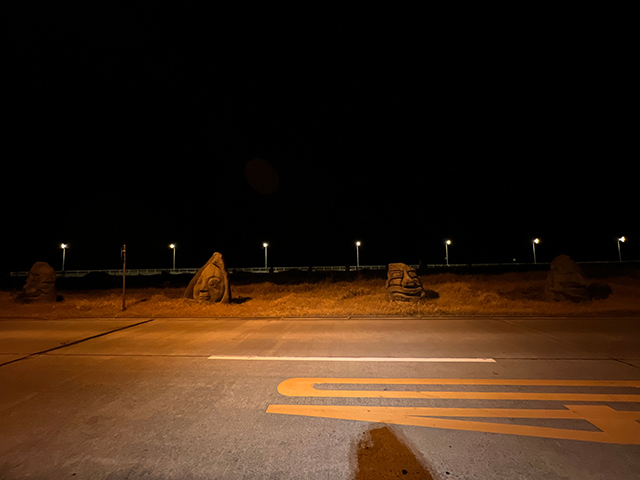
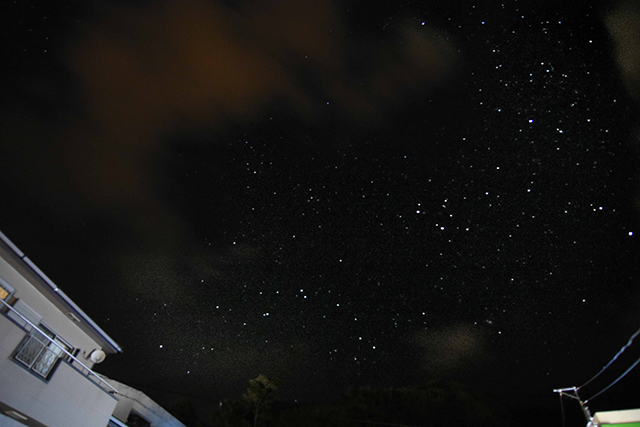
■Summary
The Kozushima-Island survey allowed us to see the island-wide efforts and effects of light pollution countermeasures and starry sky protection. However, it seems to be having a positive effect not only on the starry night sky, but also on the nighttime
ecosystem of plants and animals. According to the star guide, many migratory birds fly to Kozushima-Island, and many of them were blinded by the glare of the streetlights at night, hitting obstacles and falling down before the streetlights were replaced. There was also happy news that sea turtles had returned to lay eggs at Maehama beach. Hatchlings return to the sea at night by the light of the moon. The bright artificial light environment can be a threat to the turtles’ lives. However, there is also the life of the residents on the island. Kozushima Village measures the night sky four times a year, with the goal of keeping the results from worsening over the previous year. It has been about three years since the island was certified as a starry sky protected area by the International Dark Sky Association in 2020. The survey also raised concerns about the island’s future efforts to strike a balance between protecting the safety of island residents at night and the lights necessary for events and commerce, while at the same time maintaining a balance with natural light and the ecosystem of flora and fauna. A star-filled sky and the artificial light that supports it. We look forward to the development of a light environment that can only be seen on Kozushima-Island. In contrast to the Niijima survey, we were able to investigate a variety of artificial light environments. There is bustling light, different color temperatures, glare from streetlights, and pitch-dark roads. The unique sight of Moyai statues also made for a unique night on Niijima, quite different from that of Kozushima-Island. The statues of Moyai that we encountered during our research were quite freely designed, with some having calm, dignified, or stern expressions, and no two statues had the same face. It was uncommon to see so many unique faces scattered all over the island. If the stores, moyai statues, and Niijima-Island’s unique koga stone architecture were to be covered with a variety of lights as a nightscape for tourists to enjoy, the nighttime character of Niijima would grow even more unique. This survey of two consecutive islands in the Izu archipelago allowed us to experience that the light environment differs greatly even among the nearby islands. Tourism is one of the main industries of both islands, and I believe that the unique charm of each island will continue to attract tourists in the future. (Yuichi Anzai)
